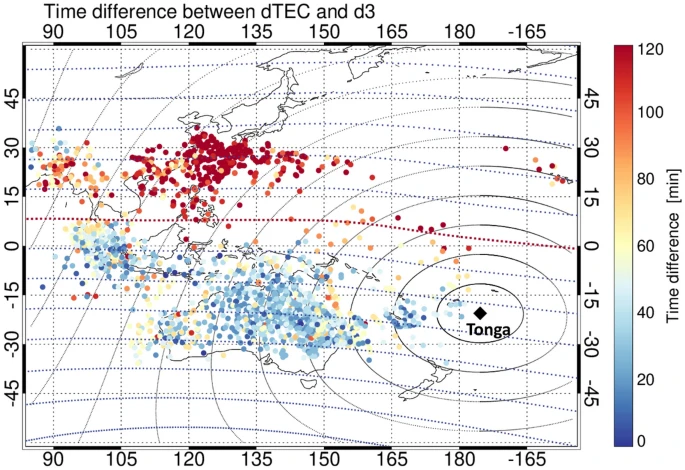Phys.org May 22, 2023
Equatorial plasma bubbles which impact satellite-based communications was observed in the Asia-Pacific region after the eruption of the Tonga volcano on January 15, 2022. Researchers in Japan used satellite and ground-based ionospheric observations to demonstrate that an air pressure wave triggered by the Tonga volcanic eruption could cause the emergence of an equatorial plasma bubble. The most prominent observation result showed a sudden increase of electron density and height of the ionosphere several ten minutes to hours before the initial arrival of the air pressure wave in the lower atmosphere. They also found that the propagation speed of ionospheric electron density variations was higher than that of a Lamb wave in the troposphere, and the electron density variations started larger in the Northern Hemisphere than in the Southern Hemisphere. According to the researchers the fast response of the ionosphere could be caused by an instantaneous transmission of the electric field to the magnetic conjugate ionosphere along the magnetic field lines. After the ionospheric perturbations, electron density depletion appeared in the equatorial and low-latitude ionosphere and extended at least up to ±25° in geomagnetic latitude… read more. Open Access TECHNICAL ARTICLE

Spatial distribution of the time difference between the onset times of TEC perturbation… and temperature deviation in the troposphere… Credit: Scientific Reports volume 13, Article number: 6450 (2023)